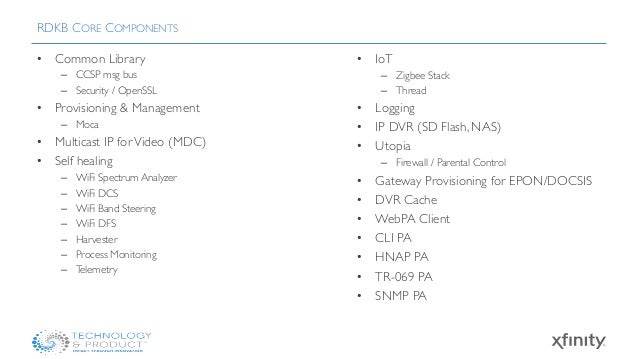Comcast Self Provisioning Tool. Interactive tool to quickly narrow your choices and contact multiple vendors. If you are experiencing any problems. Comcast Tech Training. Poorly constructed or loose F-connectors in the drop ii. Staples or sharp objects piercing the cable jacket iii. Abrasion from mortar, brick, or metal structures iv. Poor quality or inferior coax installed into the drop by a third party v. Cable that has been chewed on by rodents or dogs vi. I have a question about self install, I can't find any information about this. I'd like to get my parents off AT&T UVerse and get them onto Xfiniti. I have done the same thing, I was a long time Uverse customer, and then switched to Xfinity, I opted for the self install, provided my own modem and waited.
'When I left my position as an investment adviser, no one asked me to return my physical access card, despite the fact that I was going to work for a competitor virtually across the street. I could easily have re-entered my former employer's office and accessed the files of every single one of their clients. And because my former employer failed to turn off my e-mail account, I received group e-mails from my former colleagues discussing how they planned to attempt to steal my clients!'
This real-world anecdote is an example of a horror story told to my company. Such situations occur at organizations around the globe every day. Digital resources are a critical factor of a company's success. Yet there is poor control of who has access to these vital resources, which include computers, cell phones and PDAs, as well as access to a plethora of business, security, and IT applications and services.
A new category of software, known as provisioning solutions, is designed to help a business protect itself against identity abuse by securely automating IT tasks, facilitating secure self-service and providing the accurate and detailed IT audits that are increasingly required by governmental and industry regulations. Here are some guidelines you should consider when your company is getting ready to select a provisioning product.

Provisioning is a business issue, not an IT issue
Controlling access to IT resources is not an IT problem. This use of IT resources often means the difference between a company's success and failure. Making sure that employees have access to the resources they need to do their jobs (and that they no longer have that access when they don't need it) is clearly a business issue.

What to look for: Look for a solution that allows business managers to define changes that affect an employee's access rights, such as adding a new partner or moving personnel among task forces.
Laying the foundation: Standards and directory-based infrastructures
Since provisioning products touch many parts of an organization's infrastructure, it's important to know that your provisioning vendor is committed to standards that will allow disparate systems to communicate over a standardized interface.
What to look for: Look for support for products based on important standards such as Service Provisioning Markup Language (an XML specification for provisioning) and Web services, which together will commoditize IT system connector development, as well as LDAP directories, the universally accepted infrastructure for storing personnel profile data.
Business-process integration
Employees join projects and task forces, and companies work together to build products. Companies that hire employees may later lay them off. Each time a person moves, his needs for IT resources also change. The mapping of business changes to IT resource changes can be quite complicated.
What to look for: Since business people are the only ones who can accurately define a business change (such as a transfer or task force creation), they must be able to directly define the changes in the provisioning system. The system must be able to interpret the change and automatically understand how each business change affects a person's IT resource entitlements.
| David Lavenda is co-founder and vice president of marketing and product strategy at Rochelle Park, N.J.-based Business Layers. He can be reached at david.lavenda@businesslayers.com. |
Workflow
When a business change occurs, such as transferring an employee named Janice from the New York office to San Diego, several steps must be taken before Janice is ready to work in her new office. These include moving her mailbox, changing her e-mail group associations, and disabling old accounts and creating new ones. The list can be quite long.
Furthermore, approvals for each task must be obtained, different groups of people have to be informed of tasks to complete, and automated tasks, such as changing Janice's e-mail group associations, have to be executed. Remember, all these tasks have to be assigned to the right people, in the right order, and there has to be a mechanism for escalation if a task should fail.
What to look for: For small-business scenarios, simple provisioning products provide approval workflow, which obtains authorization before triggering provisioning tasks. For most provisioning projects, look for a product that provides dynamic workflow that can perform the following functions:
- Automatically build the workflow based on the context of the business change.
- Handle task delegation.
- Use business logic to calculate how to treat task failure.
- Have a built-in escalation mechanism to handle approval request failures.
IT automation
Provisioning products must automate many common IT tasks. Examples of automated tasks include the following:
- Create nework operating system accounts.
- Disable e-mail accounts.
- Change entitlements of smart cards.
- Configure private branch exchanges.
The provisioning product communicates with IT and security systems using software called a connector. A different connector is typically built for each system that you need to control.
What to look for: Not all connectors are created equal. Some create and disable accounts, while others also perform sophisticated manipulations of account entitlements. Look for the product that best fulfills your business needs and allows you to accommodate future needs.
Make sure the vendor offers a connector generator that you can use to create connectors to your proprietary and homegrown systems without having to hire programmers.
Password management
A typical user has access to many systems, each of which has a separate password that has to be periodically updated. To remember passwords, people either use trivial passwords, or they write them down and leave them in easy-to-find places, such as a sticky note pasted to a desk drawer. Either approach leads to big security holes, and unauthorized people can get easy access to restricted resources.

Cucm Self Provisioning
What to look for: Simple provisioning products provide basic password reset capabilities, which let users reset their passwords to different systems from a Web interface. More robust products provide both password reset and password synchronization, which automatically changes many system passwords when a designated system password-is changed. Look for good synchronization functionality, since it vastly simplifies the user experience.
Reporting and auditing in a world of compliance
With increasing interest in information security and identity management, there is a corresponding increase in the need to accurately track and report on who has access to IT resources. New governmental regulations associated with information security are driving many provisioning projects today. Examples of government regulations and the markets they affect include the following:
- Health care and insurance: HIPAA
- Finance: The USA Patriot Act and the Gramm-Leach-Bliley Act
- Pharmaceuticals: 21 CFR Part 11, on electronic records and signatures
- Education: The USA Patriot Act and the Student and Exchange Visitor Program
- Energy: Rules set by the Federal Energy Regulatory Commission and the Nuclear Energy Regulatory Commission
To comply with these regulations, you need to provide accurate IT reports on who has access to what and when they had that access.
What to look for: Most products provide some level of resource allocation information. Look for products that also provide the business reason for why access was given in the first place and who approved that access.
| ||||||||||||||||||||||||||||||||||||||||||||||||||||
Cadebill base system is a convergent billing solution for Telephone companies, wireless companies, cable companies, ISPs, local telephone companies. Cadebill's open and rule-based architecture provide a wide flexibility to setup the system for a variety of operating environments and for variety of telephony products and other products that require usage based and persistent billing such as telephone, local phone usage, cellular, pager, cable, ISP, energy. Learn more about Cadebill
A complete system for an integrated BSS, OSS, telecom business management and worfklow. Learn more about CadebillWhat Is Self Provisioning
Cadebill base system is a convergent billing solution for Telephone companies, wireless companies, cable companies, ISPs, local telephone companies. Cadebill's open and rule-based architecture provide a wide flexibility to setup the system for a variety of operating environments and for variety of telephony products and other products that require usage based and persistent billing such as telephone, local phone usage, cellular, pager, cable, ISP, energy.